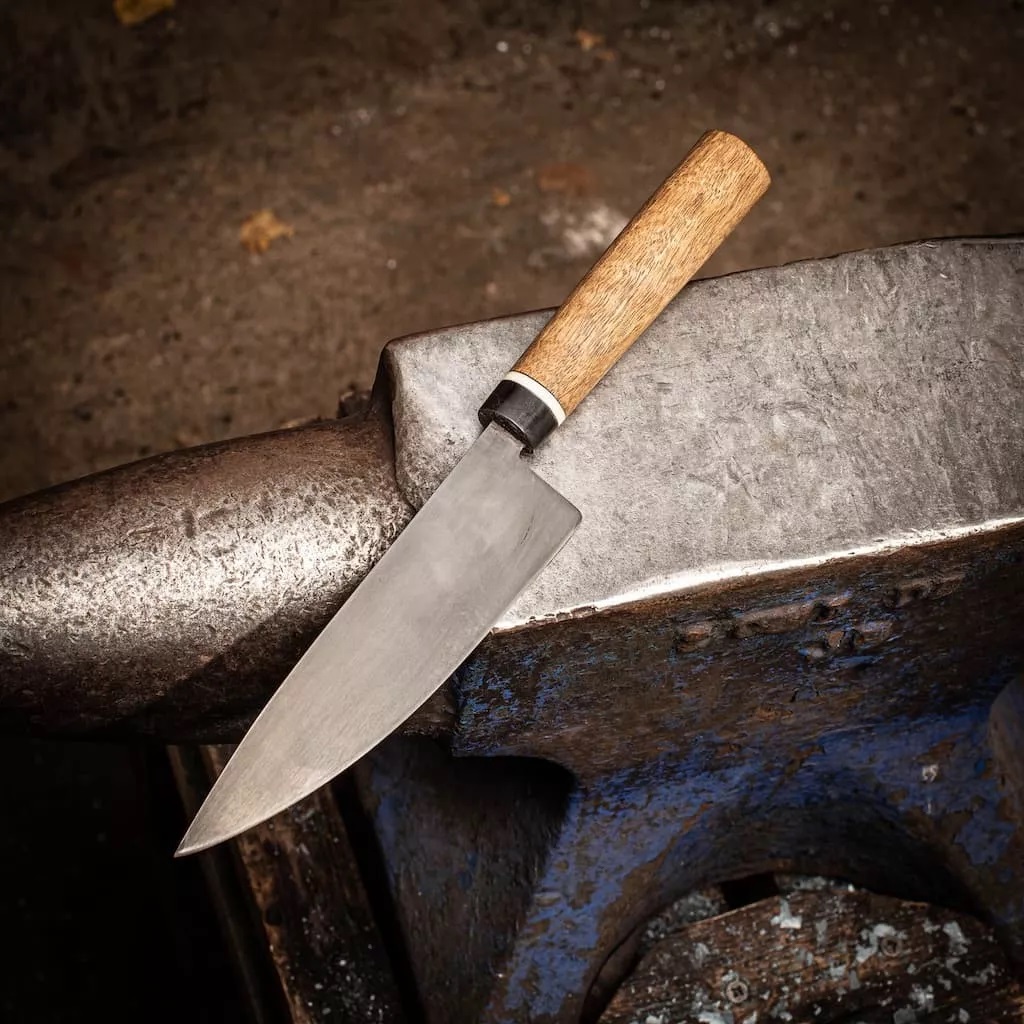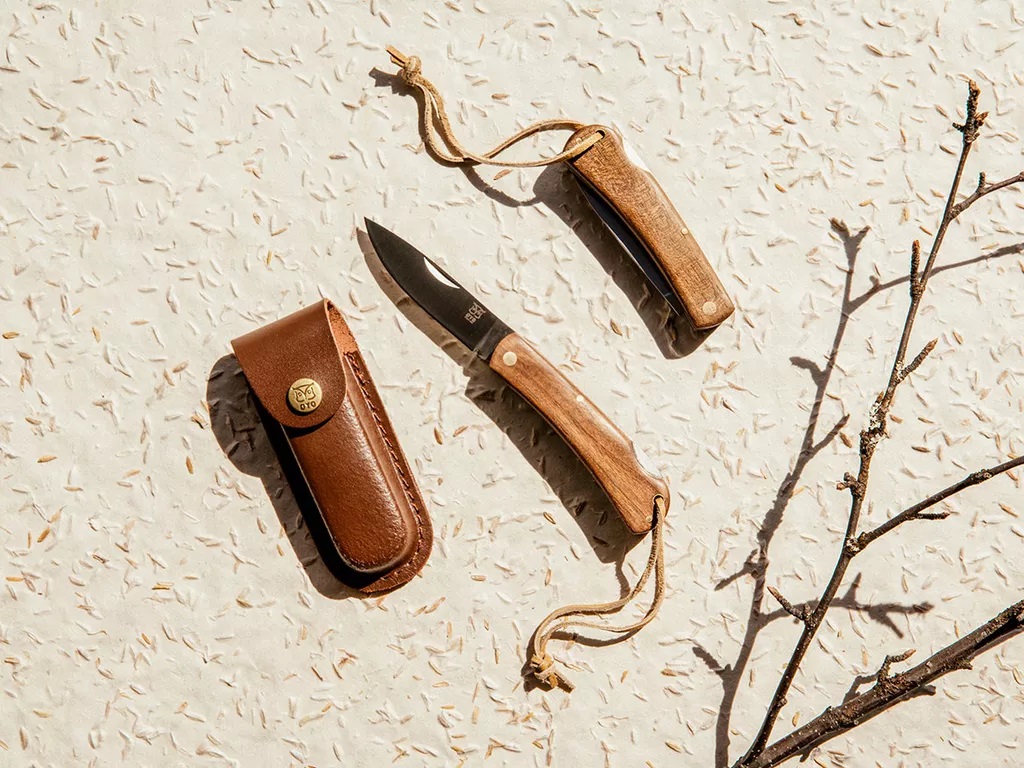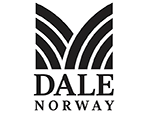Steel quality
Steel quality
When choosing steel, properties such as durability of sharpness, ease of maintenance and sharpening, and last but not least, the price and availability of steel are considered. All these practical properties are inextricably linked to the hardness of the steel. For Øyo, good steel quality is all about the balance between the duration of the knife's sharpness - how long it lasts before it dulls - and how easy it is to resharpen. For a large proportion of our knives, we have therefore chosen a steel hardness that we believe is appropriate in relation to this balance.

Rockwell
The Rockwell scale (hrc) provides an objective measure of quality that describes the hardness of the steel. The harder the steel, the more material strength. Rockwell is an international hardness scale that indicates the surface hardness of the metal. There are several scales A, B, C, D, E, F, G, H, K, N and T. The most commonly used scales are B- and C- and are called HRB and HRC respectively. The scale used to measure material strength in knives is hrc.
The quality of the knife steel helps to determine how hard the steel can be hardened and, in turn, which HRC can be achieved. Different hardening will therefore also give the knife steel slightly different qualities.
There are several variables that can change this relationship. One is the alloy itself, and another is whether the knife is forged or stamped. A forged knife will have relatively much greater material strength at lower HRC values. This means that rockwell must be considered in relation to steel quality, alloy and whether the knife is forged or stamped.
Knife steel that is hardened above 57-58 HCR may cause the material to become brittle. When the thin blade edge of 20-30 microns, which is common for most steel knives, proper hardening is important. A softer steel will cause it to bend and a harder steel may cause it to break. The material that has bent can be straightened against a sharpening steel, while with broken material, enough material must be removed to restore the edge to 20-30 microns. This process usually involves grinding or using coarse sharpening steel or diamond steel. This leads to sharpening cracks and a less sharp edge.

Steel grades
To make it easier for you to decide on the steel quality of an Øyo knife, we have chosen to divide our knives into 3 different steel categories; Standard steel, Premium steel and Exclusive steel. All knives will be labeled with which category the specific product belongs to, making it easier for you to make an informed choice.
Standard steel
For us, quality is important regardless of price, but the steel will change a lot from standard steel grade to premium steel grade. Standard steel has a softer steel and requires frequent sharpening to keep the edge sharp. In return, the edge will be very easy to sharpen. Øyo knives with the standard steel category will have a grinding degree of 20 degrees and the steel is hardened to approximately 52-55 hrc. Steel grades that fall under this category are e.g. 3cr, 420 steel.
Premium steel
Here you get a lot of steel for your money and a very good choice for most people. The steel is soft enough that you can sharpen the edge yourself, but hard enough that you don't need to do it as often (depending on how much you use the knife, of course). The edge is set up at 20 degrees and the steel is hardened to about 55-57 hrc. Steel grades that fall under this category are e.g. 5-8cr, 4116, 440A/B, AUS6-8, 13C26.
Exclusive steel
Here you get steel quality that really comes into its own. On kitchen knives, you'll get a much thinner edge that makes cooking a breeze. In the open air, you'll get full-length knives that are extremely durable. In kitchens, the edge is set up at 16 degrees and Damascus knives with a hard core and softer steel layered on the outside. Again, this steel quality will not be suitable for hard (e.g. bone) or frozen foods, but exceptional on soft foods. The edge can be somewhat more demanding to sharpen yourself, but in return you will have a sharp edge for a very long time. The steel is hardened to approximately 58-62 hrc. Steel grades that fall under this category are 9cr, 440C, AUS10, 14C28, VG10.
We can help you sharpen your knife at Geilo or at Gokniven by Asbjørn at Skedsmokorset.












